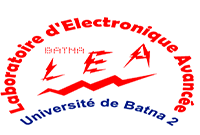Citation:
Abstract:
In this paper, a new Graphene nanoribbon (GNR) based Ge-phototransistor is proposed and investigated numerically by self-consistently solving the Schrödinger equation and Poisson equation using non-equilibrium Green's function (NEGF) formalism. An overall performance metrics comparison between both the conventional Si-based phototransistor and the proposed design is performed. It is found that the proposed GNR Ge-phototransistor provides better electrical and optical performances compared to the conventional counterpart. Moreover, using GNR material as a channel can improve the device performance not only enables a high Ion/Ioff ratio, but also allows achieving a superior sensitivity for ultra-low optical powers. It is also revealed that the responsivity of the investigated design can be increased by reducing the GNR channel length. This underlines the outstanding capability of the proposed design for bridging the gap between modern nanoelectronic and nanophotonic technologies. In addition, the proposed GNR-based Ge-phototransistor can achieve an acceptable detectivity for very weak optical power intensities, in the order of some Femto-Watts, which leads to reduce the total power consumption associated with optical links. Therefore, the proposed GNR phototransistor pinpoints a new path toward achieving an ultrasensitive photoreceiver with low power consumption, which makes it potential alternative for chip-level Infrared communication and nano-optoelectronic applications.
